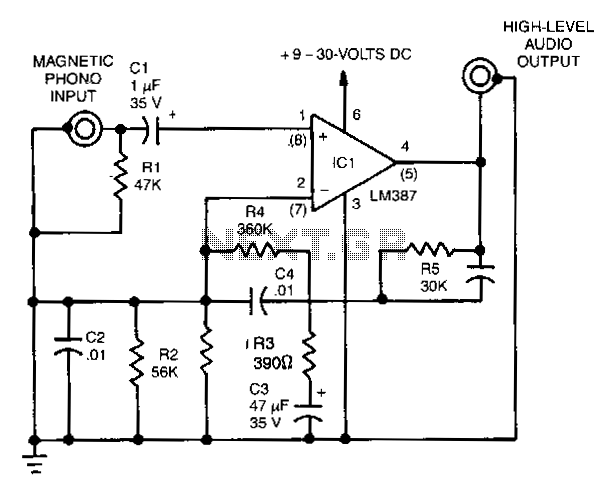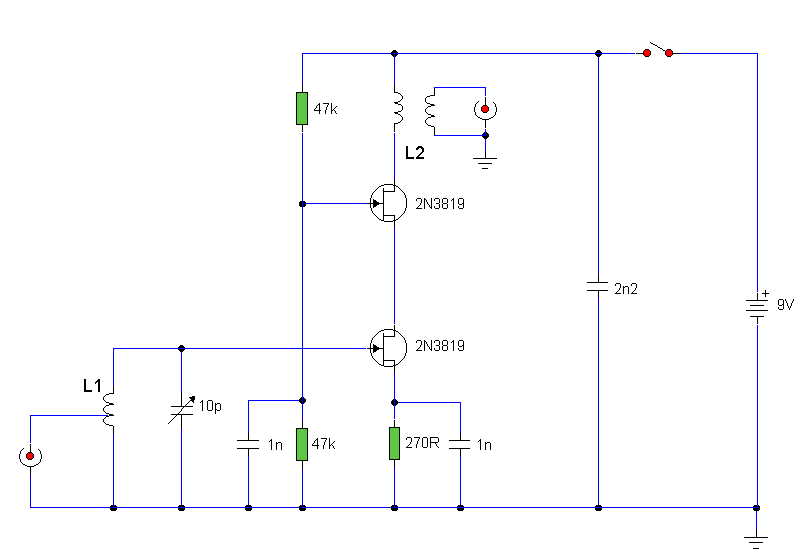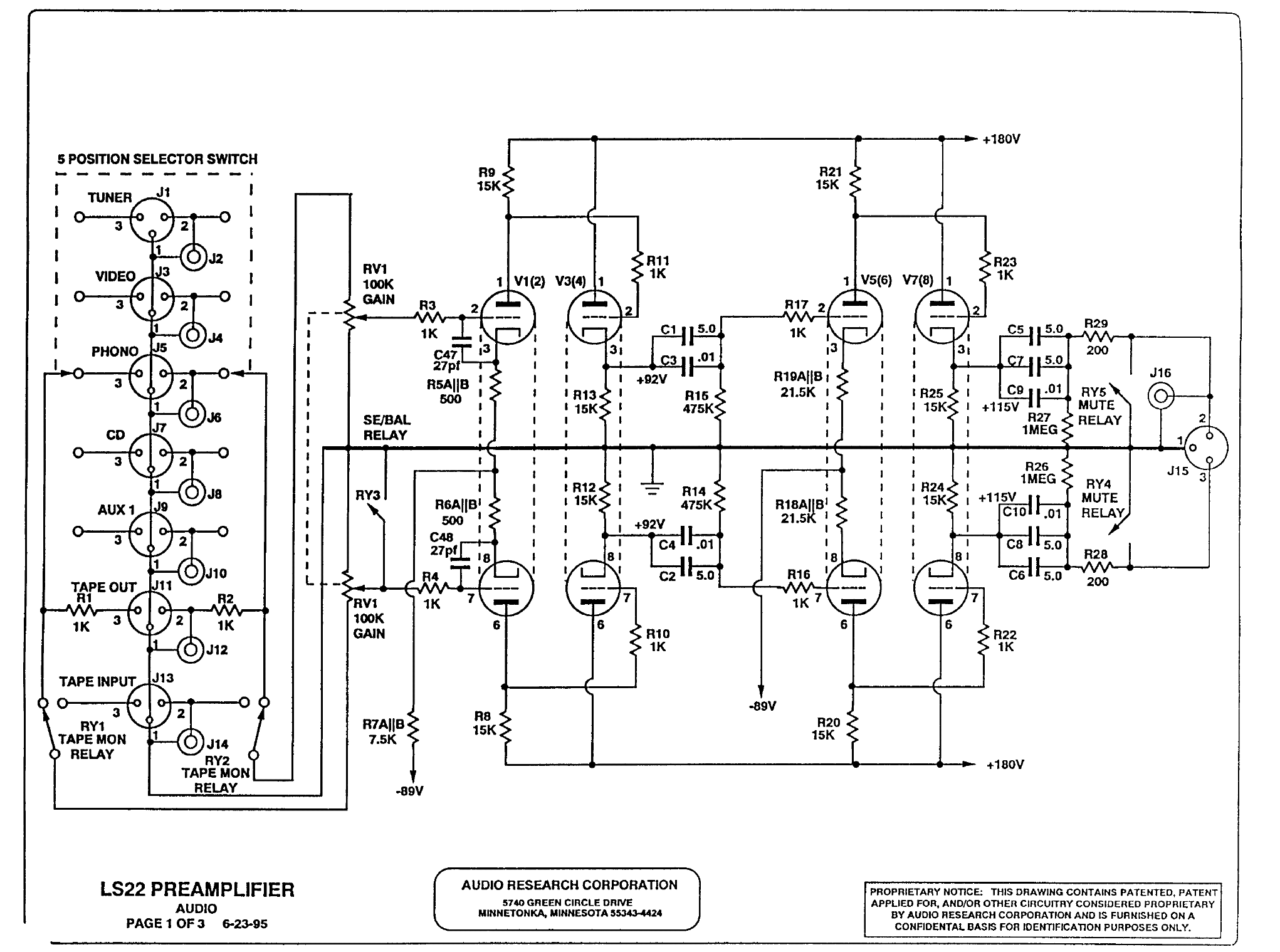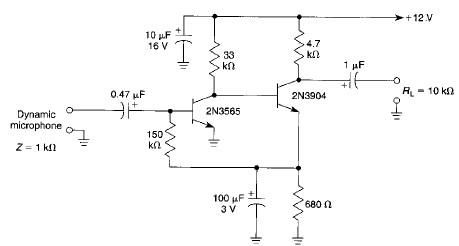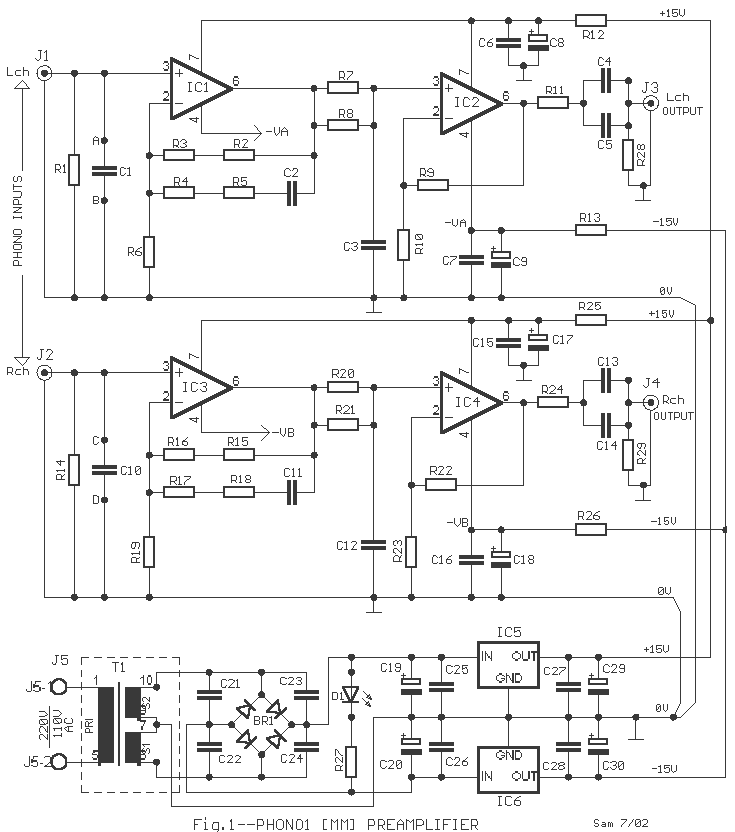
Preamplifier for magnetic phono cartridges schematics
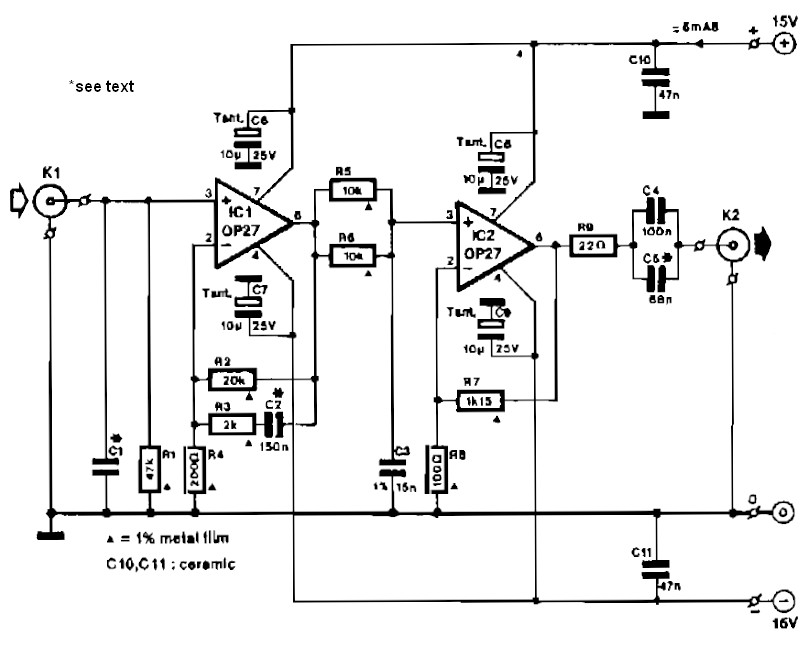
Circuit IC1 provides a gain amplification of 40 dB, which decreases to approximately 20 dB when the frequency exceeds 500 Hz. To reduce resistor noise and the load on the operational amplifier at higher frequencies, the value of resistor R3 is chosen as a compromise. The associated polystyrene capacitor, C2, should have a tolerance of 1 to 2%. To elevate the 2 mV output from the dynamic pick-up to line level at 1 kHz, a linear amplifier, IC2, has been incorporated. This stage offers a gain of 22 dB, resulting in a 250 mV output signal.
The circuit described consists of two primary amplification stages. The first stage, represented by IC1, operates as a low-noise preamplifier designed to amplify weak signals from a dynamic pick-up. The initial gain of 40 dB allows for effective amplification of low-level signals, which is critical in applications such as audio processing where signal integrity is paramount. The gain reduction to 20 dB at frequencies above 500 Hz indicates a frequency response tailored to minimize noise while maintaining signal fidelity at lower frequencies.
Resistor R3 plays a crucial role in this configuration. Its value is selected to strike a balance between minimizing thermal noise, which can adversely affect signal quality, and ensuring that the operational amplifier (op-amp) does not experience excessive loading at higher frequencies. This careful consideration of resistor value is vital for maintaining the overall performance of the circuit.
Capacitor C2, a polystyrene type, is specified with a tolerance of 1 to 2%. This precision is important in audio applications where variations in capacitance can lead to shifts in frequency response and signal distortion. The choice of polystyrene capacitors is often due to their favorable characteristics, including low dielectric absorption and low noise, which contribute to the high performance of the circuit.
The second stage of the circuit involves IC2, a linear amplifier designed to further boost the output signal from the dynamic pick-up. With a gain of 22 dB, this stage is capable of elevating the output to a more usable level, specifically targeting a line level of 250 mV at 1 kHz. This is particularly important for interfacing with subsequent audio processing equipment, ensuring compatibility and optimal signal levels.
Overall, this circuit design effectively amplifies low-level signals while managing noise and frequency response characteristics, making it suitable for high-fidelity audio applications. The combination of a well-chosen resistor value, a precision capacitor, and a robust linear amplifier stage results in a reliable and high-performance amplification solution.Circuit IC1 provides a do amplification of 40 dB, which drops to about 20 dB when the frequency rises above 500 Hz. To minimize the (resistor) noise and the load of the op amp at higher frequencies, the value of R3 is a compromise.
The associated polystyrene capacitor, C2, should have a tolerance of 1 to 2%. To raise the 2-mV output of the dynamic pick-up to line level at 1 kHz, linear amplifier IC2 has been added. This stage has a gain of 22 dB, so a signal of 250 mV is available at its output. 🔗 External reference
The circuit described consists of two primary amplification stages. The first stage, represented by IC1, operates as a low-noise preamplifier designed to amplify weak signals from a dynamic pick-up. The initial gain of 40 dB allows for effective amplification of low-level signals, which is critical in applications such as audio processing where signal integrity is paramount. The gain reduction to 20 dB at frequencies above 500 Hz indicates a frequency response tailored to minimize noise while maintaining signal fidelity at lower frequencies.
Resistor R3 plays a crucial role in this configuration. Its value is selected to strike a balance between minimizing thermal noise, which can adversely affect signal quality, and ensuring that the operational amplifier (op-amp) does not experience excessive loading at higher frequencies. This careful consideration of resistor value is vital for maintaining the overall performance of the circuit.
Capacitor C2, a polystyrene type, is specified with a tolerance of 1 to 2%. This precision is important in audio applications where variations in capacitance can lead to shifts in frequency response and signal distortion. The choice of polystyrene capacitors is often due to their favorable characteristics, including low dielectric absorption and low noise, which contribute to the high performance of the circuit.
The second stage of the circuit involves IC2, a linear amplifier designed to further boost the output signal from the dynamic pick-up. With a gain of 22 dB, this stage is capable of elevating the output to a more usable level, specifically targeting a line level of 250 mV at 1 kHz. This is particularly important for interfacing with subsequent audio processing equipment, ensuring compatibility and optimal signal levels.
Overall, this circuit design effectively amplifies low-level signals while managing noise and frequency response characteristics, making it suitable for high-fidelity audio applications. The combination of a well-chosen resistor value, a precision capacitor, and a robust linear amplifier stage results in a reliable and high-performance amplification solution.Circuit IC1 provides a do amplification of 40 dB, which drops to about 20 dB when the frequency rises above 500 Hz. To minimize the (resistor) noise and the load of the op amp at higher frequencies, the value of R3 is a compromise.
The associated polystyrene capacitor, C2, should have a tolerance of 1 to 2%. To raise the 2-mV output of the dynamic pick-up to line level at 1 kHz, linear amplifier IC2 has been added. This stage has a gain of 22 dB, so a signal of 250 mV is available at its output. 🔗 External reference
